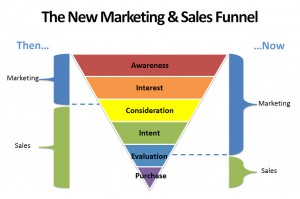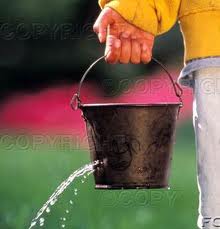Understanding the Distinction: Voice of Customer Research vs. Sales Discovery and Qualifying
In my recent book, I share how Voice of the Customer research gives teams the key insights to drive strategic business growth. Salespeople understanding customer needs and preferences is paramount for success. While both Voice of Customer (VoC) research and sales discovery and qualifying serve to gather insights about customers, they differ significantly in their approach, focus, skills and objectives.
Lately, I have contributed content on LinkedIn that needs clarification about salespeople conducting voice-of-customer research. In this article, we’ll explore the distinction between VoC research and sales discovery and qualifying and why salespeople should prioritize selling over conducting research.
Voice of Customer Research: Understanding Market Dynamics
Voice of Customer (VoC) research involves gathering feedback, insights, and opinions directly from customers to understand their preferences, expectations, and pain points. This research typically takes the form of surveys, interviews, focus groups, and observation methods and aims to provide a holistic understanding of the market landscape, customer needs, and competitive dynamics. We recommend that trained researchers conduct these interviews to gain unbiased insights into customers’ satisfaction, struggles, and why they buy from you.( and why they buy from your competitors)
Sales Discovery and Qualifying: Uncovering Specific Customer Needs
On the other hand, sales discovery and qualifying are integral components of the sales process that focus on uncovering specific customer needs, challenges, and priorities to tailor solutions and drive sales growth. Through targeted questioning, active listening, and needs analysis, sales professionals engage prospects in meaningful conversations to identify pain points, assess fit, build relationships and qualify leads based on their likelihood to purchase.
When a team has conducted VOC, we often discover three to five insight pillars and better understand current customer and market challenges. With these insights, we can develop strategic growth plans and marketing materials in the Voice of your customers and deliver the best buying experience.
As best-selling author Vern Harnish shares…
“ Developing strategy without customer insights is Criminal”
However I hear some skeptics saying why can’t sales do research and selling activities?
Why Salespeople Should Sell, Not Conduct Research:
1. Time Efficiency:
Salespeople are tasked with driving revenue and closing deals, making their time valuable. While VoC research is essential for informing broader marketing strategies and product development initiatives, salespeople should prioritize selling activities directly contributing to revenue generation.
Studies indicate salespeople are spending less than 25% of their sellable time selling today as it is.
We want salespeople to speak with customers and prospects, understand the problems they face today, and help them fix their issues with a consultative approach, selling outcomes, not products or solutions.
2. Expertise and Focus:
Sales professionals possess expertise in building relationships, overcoming objections, and closing deals, making them valuable assets in the sales process. By leveraging their skills and focusing on engaging prospects, salespeople can add unique value and drive meaningful outcomes for both the customer and the organization.
As I share in my new book, Voice of Customer, we want salespeople to refrain from conducting market research.
3. Customer-Centric Approach:
Sales discovery and qualifying are inherently customer-centric activities that prioritize understanding and addressing individual prospects’ specific needs and challenges. Salespeople demonstrate their commitment to delivering value and building customer trust by engaging in personalized conversations and providing tailored solutions.
We train and coach salespeople never to assume a current or new prospect has a problem. Through research, we may have learned common problems customers and prospects face today. In the sales training and coaching programs, we help sales teams take these market insights and turn them into strong discovery and qualifying questions that demonstrate competence, build trust, and help salespeople understand the need to be solved completely.
4. Alignment with Sales Goals:
Ultimately, salespeople’s primary goal is to drive revenue and achieve sales targets. While VoC research informs broader strategic initiatives, sales discovery and qualifying directly contribute to the bottom line by identifying qualified leads and closing deals. Salespeople should focus on activities that align with their sales goals and priorities.
As Scaling-up coaches, we often help teams with an interactive exercise called the functional accountability exercise to ensure which role owns what task.
Marketing and product management understand the market and customer problems from a strategic point of view. They help organizations understand how customers want to be served and the criteria they need to make buying decisions.
Marketing and product management will gather insights to determine customer satisfaction and Net Promotor score.
Sales take the insights, tools, and content marketing develops, meets with ideal customers, and asks strong discovery questions to confirm that the customer or prospect has problems they can solve.
In addition, we train salespeople how to qualify the customer.
Do they have a budget?
Do you know if the person you are speaking with has the authority to make a purchase?
Do we clearly understand the need?
Do we know the customer’s timeline?
Next steps…
With marketing insights and persona-based messaging, salespeople increase sales and drive explosive growth in revenue and profits.
With robust discovery and qualifying skills, salespeople find more opportunities to quote and significantly increase their close rates.
While Voice of Customer (VoC) research, sales discovery, and qualifying are essential components of writing a strategic sales and marketing plan, the sales and marketing teams have distinct purposes and require different approaches.
Salespeople should prioritize selling activities that leverage their expertise, training, and coaching, as well as focus on understanding customer needs and driving revenue generation.
Marketing and product management often hire industry-leading trained market researchers to gather actionable unbiased insights to serve their customers and markets today.
By understanding the distinction between VoC research and sales discovery and qualifying, sales professionals can optimize their efforts and maximize their impact in driving sales success.
Let’s schedule a call if you would like to gather actionable customer insights and train your salespeople in discovery and qualifying skills.












